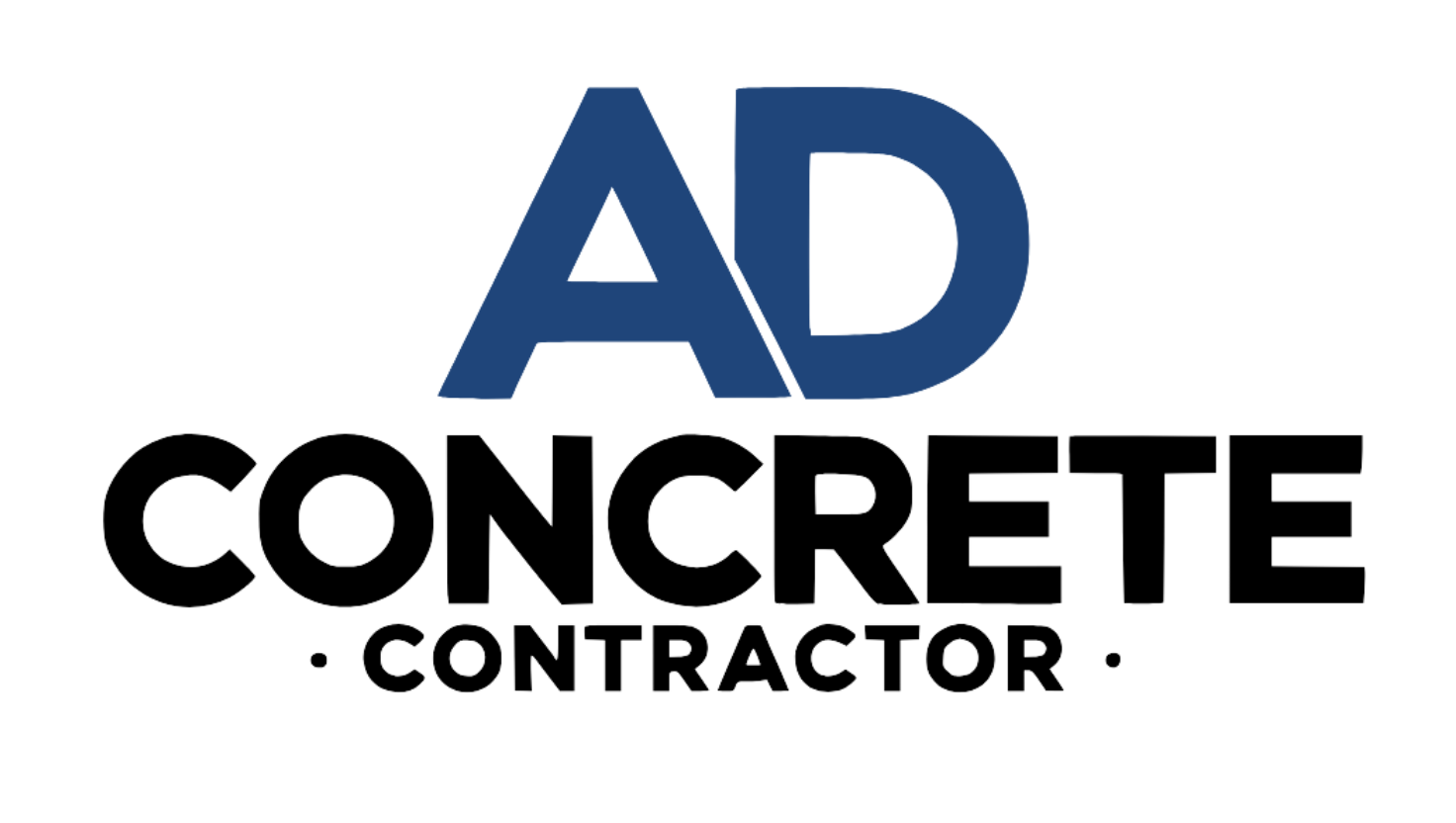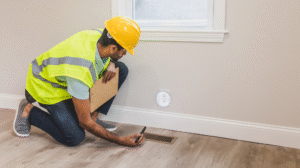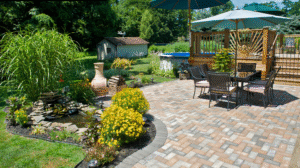Let’s be real here – you just dropped a few grand on a beautiful new concrete patio, and now you’re itching to drag out the grill and host that backyard party you’ve been planning for months. But hold up a second… is your concrete actually ready?
I can’t tell you how many times I’ve seen homeowners rush the process only to end up with a damaged patio that’ll never look right again. Trust me, I’ve made this mistake myself (more on that embarrassing story later).
Today, I’m breaking down everything you need to know about concrete curing times – not the oversimplified version you might get from a contractor in a hurry, but the real deal, backed by data and my 15+ years working with concrete projects.
Understanding Concrete Curing vs. Drying
First things first – curing and drying are NOT the same thing, and this confusion costs homeowners thousands in repairs every year.
Drying is simply the evaporation of excess water from the concrete. Your patio might look dry on the surface after just a day or two, but don’t be fooled.
Curing, on the other hand, is the chemical reaction (hydration) where cement particles bond with water to create the crystalline structure that gives concrete its legendary strength. This process continues for weeks, even months.
Here’s the crucial part many people miss: proper curing isn’t just about waiting – it’s about maintaining the right conditions for this chemical reaction to happen optimally. When concrete cures correctly, it can reach up to 4,000 PSI in compressive strength. Rush it, and you might be stuck with a weak 2,000 PSI slab that cracks under pressure.
Standard Concrete Patio Curing Timeline
Let me break down the typical timeline you’re looking at:
Initial Set (24-48 hours)
During the first 24-48 hours, your concrete transforms from a workable goop to a solid surface. At this point, it’s reached maybe 10% of its final strength – enough to support light foot traffic, but that’s about it.
I once had a client who let their dog run across a day-old patio. Those paw prints are now permanent “decorative features.” Don’t be that person.
Early Curing Phase (7 days)
By the end of the first week, your concrete has typically reached 70% of its final strength. This is when many contractors will tell you it’s “basically ready” – and while you can carefully walk on it, it’s still vulnerable.
Full Curing Period (28 days)
The industry standard for full curing is 28 days. At this point, your concrete has reached about 90-95% of its maximum strength. The remaining 5-10% will develop over the following months and even years.
Here’s a strength development chart based on data from the Portland Cement Association:
- 1 day: 16% of design strength
- 3 days: 40% of design strength
- 7 days: 65% of design strength
- 14 days: 90% of design strength
- 28 days: 99% of design strength
Factors That Affect Curing Time
Not all concrete cures at the same rate. Here are the major factors that could speed up or slow down your timeline:
Weather Conditions
Temperature and humidity are huge factors. The ideal curing temperature is between 50-85°F (10-29°C).
- Hot weather (above 85°F/29°C): Accelerates initial setting but can cause rapid moisture loss, leading to shrinkage cracks and reduced long-term strength. In extreme heat, concrete can lose strength by up to 30%.
- Cold weather (below 50°F/10°C): Dramatically slows the curing process. Below 40°F (4°C), hydration nearly stops. I’ve seen patios poured in late fall that didn’t fully cure until the following spring.
- Humidity: Lower humidity means faster evaporation. In desert climates with 20% humidity, you’ll need to work extra hard to keep moisture in the concrete.
Concrete Mix Composition
The water-to-cement ratio is crucial. A lower ratio (less water) creates stronger concrete but requires more careful curing. Additives like fly ash or slag cement typically extend curing time but can improve final strength by up to 20%.
Thickness of the Slab
Thicker slabs take longer to cure uniformly. A standard 4-inch residential patio will cure differently than a 6-inch slab designed for heavier loads. As a rule of thumb, add 24 hours of curing time for each additional inch of thickness.
Proper Curing Techniques for Optimal Results
Want to ensure your concrete reaches its maximum potential? Here are the methods that actually work:
Moisture Retention Methods
Wet curing is the gold standard. Keeping concrete moist during the first 7 days can increase strength by up to 50% compared to concrete left to dry naturally.
Options include:
- Spraying water on the surface several times daily
- Covering with wet burlap or cotton mats
- Using plastic sheeting to trap moisture (my personal go-to for residential projects)
Curing Compounds
These liquid membranes form a film that prevents moisture loss. They’re sprayed on after finishing and can retain 80-90% of the water needed for hydration. The best part? Apply once and forget it.
Temperature Control
In extreme weather, you’ll need to manage temperature:
- Cold weather: Insulated blankets can maintain temperatures above 50°F
- Hot weather: Shade structures and evaporative cooling can prevent overheating
Remember that story I promised? Years ago, I poured a patio during a heatwave without proper moisture retention. Within hours, it developed a network of hairline cracks that no amount of sealer could hide. A $5,000 job ruined because I skipped a $50 curing solution. Learn from my mistake.
Signs Your Concrete Patio Is Properly Cured
How do you know when your concrete has properly cured? Look for these indicators:
Visual Indicators
- Uniform color throughout (no dark spots indicating moisture)
- No efflorescence (white powdery substance)
- No visible cracks beyond hairline surface cracks
Strength Testing
For critical applications, professionals use non-destructive testing methods like the rebound hammer test. For homeowners, a simpler test is the “coin tap” – a properly cured concrete produces a clear ringing sound when tapped with a metal object.
Moisture Content Evaluation
For applications requiring sealing, moisture content should be below 4%. You can test this with a calcium chloride test kit or a digital moisture meter.
Common Mistakes to Avoid During the Curing Process
I’ve seen it all when it comes to concrete curing mistakes. Here are the big ones to avoid:
Walking or Placing Items Too Soon
Foot traffic in the first 24-48 hours can leave permanent impressions. Placing furniture before 7 days can create pressure points that lead to cracking.
Inadequate Moisture During Curing
Letting concrete dry out too quickly is the one mistake I see. In hot, dry conditions, concrete can lose moisture so fast that the chemical reaction stops prematurely, reducing potential strength by up to 50%.
Extreme Temperature Exposure
Freezing temperatures in the first 48 hours can permanently damage concrete. Similarly, temperatures above 95°F (35°C) without moisture protection can cause rapid evaporation and cracking.
Rushing the Process
I get it – you’re excited about your new patio. But every day you give your concrete to properly cure adds years to its lifespan.
When Can You Start Using Your New Patio?
Here’s my practical timeline for patio use:
Light Foot Traffic: 24-48 hours
You can carefully walk on the surface after 24-48 hours, but avoid dragging anything across it.
Furniture Placement: 7-10 days
Wait at least a week before placing lightweight furniture. Use protective pads under all legs.
Heavy Objects: 28 days
Grills, heavy planters, and outdoor kitchens should wait the full 28 days.
Sealing: 28-30 days minimum
Most sealers require concrete to be fully cured and have a moisture content below 4%. Applying sealer too early traps moisture and causes clouding or peeling.
Conclusion
The reality is that while your concrete patio might look ready within days, the invisible chemical processes that give it strength continue for weeks. The standard 28-day cure time isn’t some arbitrary number – it’s based on decades of engineering data showing optimal strength development.
Is it possible to use your patio sooner? Sure. But every day you wait increases its durability and lifespan. A properly cured concrete patio can last 30+ years with minimal maintenance. Rush the process, and you might be looking at repairs within 5 years.
The bottom line: Your patience now pays dividends later. Trust me, that backyard barbecue will taste even better on a properly cured patio that’s built to last.



